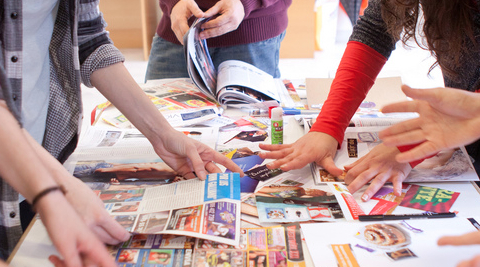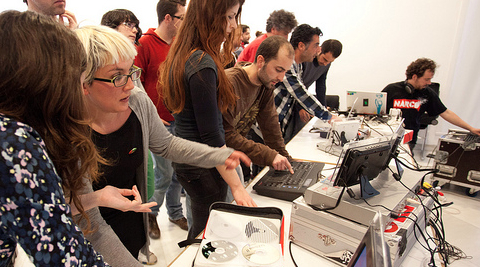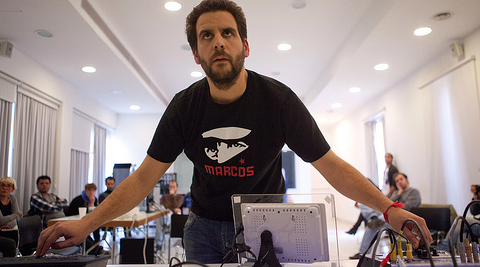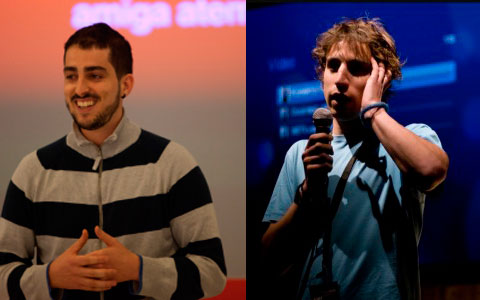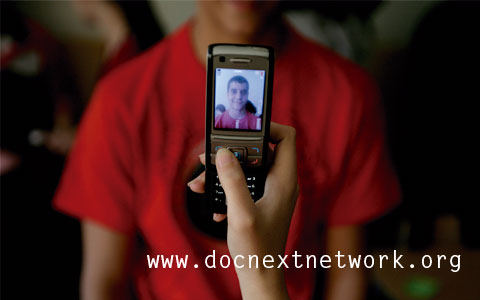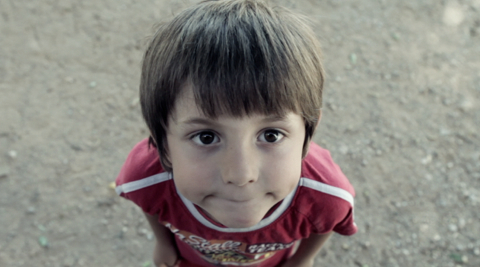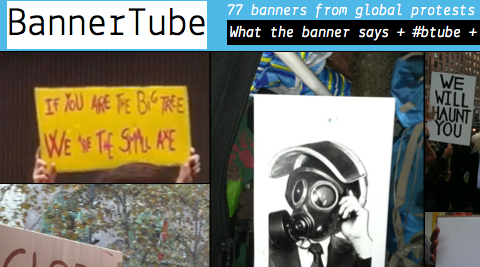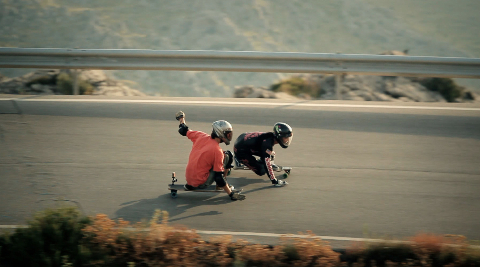¿De qué trata el taller de remezcla en el SEFF?
by rubendiaz
En días anteriores hemos anunciado un nuevo taller de remezcla audiovisual, esta vez en el marco del Festival de Cine Europeo de Sevilla (SEFF). No es la primera vez que hacemos este taller, que se ha realizado en el CAAC, en el CCCB o en el MNCARS, y que cuenta con el decidido apoyo de la European Cultural Foundation.
El título del taller es “Remezcla Audiovisual: la sociedad fascinada. Desleer, releer y rehacer imágenes mediáticas”. La remezcla está presente en nuestro día a día. La imitación que lleva a cabo un bebé para aprender a hablar, es remezcla. El publicista que ve un vídeo en Youtube y decide desarrollar una nueva idea para un spot. El músico que lee el periódico y rescata una frase para convertirla en canción. El cocinero que piensa un plato mientras ve trabajar a su amigo el jardinero. La remezcla está en todas partes, pero sobre todo, en nuestro cerebro.
La remezcla audiovisual está tan presente que corre el riesgo de convertirse en una moda vacía de contenido dejada en manos de la fascinación por la imagen en movimiento. Pero remezclar no es simplemente “tomar materiales ajenos” o “usar cosas que no son propias” para crear. Cuando remezclas estás asumiendo otras voces y estás “imitando” otras historias que forman parte de nuestra cultura. Y estás deconstruyendo esa cultura, la transformas. En este taller vamos a desenmascarar estereotipos y a trabajar con las imágenes del consumo. En la sociedad del espectáculo, la fascinación que nos provocan las imágenes, no nos dejan ver más allá de la piel de los mensajes. ¿Qué se esconde detrás del discurso del consumo?
La principal tesis de este taller es considerar la remezcla como una herramienta de relectura. Tijeras y pegamento. Cortar y pegar. Versiones y reversionar. Deshacer y rehacer. Desleer y releer. Los poderes fácticos inundan el paisaje mediático con su bucle constante que podría resumirse en: consume o muere. La identidad es un espacio de constante negociación dónde la remezcla puede jugar un papel esencial en la redefinición del yo y del nosotros. Una negociación que debe tener como fin último la crítica, el aprendizaje y la generación de preguntas sobre el sistema en el que vivimos.
Por otra parte y en nuestra experiencia acumulada a través de diversos talleres (impartidos y recibidos), somos conscientes de que el papel del juego es esencial. No hay aprendizaje sin juego, como no puede haber juego sin reflexión. Diseñamos un taller en el que cada día debe practicarse algún aspecto relacionado con la remezcla. Probar, tocar y ensayar.
Por último, cada participante deberá desarrollar un pequeño proyecto audiovisual de un mínimo de un minuto. A partir de la idea de deconstruir un estereotipo relacionado con la sociedad de consumo, cada persona deberá realizar un ejercicio audiovisual donde ponga en práctica lo aprendido en el taller. Ese vídeo formará parte de la media collection de la red Doc Next, como los vídeos resultados del taller del CAAC, entre ellos los de Rocío y Alfonso, que se han terminado proyectando en festivales de la categoría de IDFA, el mes próximo en Amsterdam. La red Doc Next dará visibilidad a los trabajos en toda Europa.
//
Cuándo:
del 8 al 11 de noviembre, de 17:00 a 21:00
Dónde:
I+CAS – Monasterio de San Clemente (c/ Torneo, 18)
Quién:
El taller lo impartirá Felipe G. Gil, miembro de ZEMOS98 y autor del blog “Viaje al centro de la remezcla”.
Para quién:
Dirigido a jóvenes realizadores, documentalistas y videoartistas, así como a todo aquel interesado en la crítica cultural a través del uso de los media. El idioma del taller será el español.
Cómo inscribirte:
El aforo será limitado. Inscripción previa e información sobre inscripciones en: profesionales@festivaldesevilla.com.
‘Epidermis’ and ‘Political Brands, Empty words’, at IDFA
by rubendiaz
Rocío Trejo Zamorano and Alfonso Alcalá Olmo participated a workshop on political video remix produced by ZEMOS98 in the Andalusian Center of Contemporary Arts, in Sevilla, in March 2011.
As a result they produced two political remix videos: ‘Epidermis‘ and ‘Political Brands, Empty words‘.
These two videos, together with other short films from Turkey, Poland, England and Holland, will be screened prior to long documentaries in the main program of IDFA.
Congratulations to Rocío and Alfonso!
As we already publiched, Felipe and Pablo are attending to the IDFAcademy next to 10 DIY Doc Next media makers.
And now we can say that Rocío and Alfonso’s works are part of the following Doc Next films which have been selected for screening in the main IDFA program:
* Brothers by Emi Mazurkiewicz (19) from Poland. A short film capturing the love, life and imagination of two young brothers.
* I’m looking for Someone by Janusz Kojro (26) from Poland. Polish Internet portals: in a city the size of Warsaw, a reunion of two bystanders statistically happens once only in 17 years.
* Epidermis by Alfonso Alcalá Olmo (27) fom Spain. Video dedicated to all the happy owners of a multiple, alternative and fragmented beauty that is different from the one dictating our markets.
* Laundrette by Alex Neville (21) from the UK. A short contemplative documentary revolving around the late night inhabitants of a launderette. (‘Best Documentary’ BFI Futures Film Festival 2011,
’Official Selection’ Edinburgh International Film Festival 2010,
’Official Selection’ London International Documentary Festival 2011 and ‘Grand Jury Prize’ SoFi Film Festival 2010.)
* Media Deception by Zarah Kanwal, Fatima Patel, Tayyaba Malik, Rumana All, Nasaybah Hussain and Khadeejah Bepari (13-18) from the UK. What do young muslims think of the media?
* Political Brands, Empty Words by Rocío Trejo Zamorano (21) from Spain. A political video-remix about brands and politics.
* View from my window,1968-1979 chronicles by Katarzyna Nalewajka, Ula Klimek, Milosz Hermanowicz, Kamil Radziszewski and Jakub Piątek from Poland. A remix of 40 pictures of the late Polish photographer Mariusz Hermanowicz, taken from a flat on People’s Army Street nr. 23
* Wires by Jacob Dwyer (23) from the UK. A man is trying to collect his memory on a rooftop via a wire full of photographs of different places. Did the photographs prompt his memory or become his memory?
* Draw me a crisis by Alketa Ramaj (21) from Albania / Greece. How crisis looks like according to Greek people.
* Ebb and Tide by Akile Nazli Kaya (31) from Turkey. A personal immigration story challenging the existing imagery of Turks in Europe.
//
Besides, we’ll have the Doc Next Mini Cinema: we screen the best of the Doc Next Media Collection in ongoing and thematic video shows, in a mini cinema at the Rembrandtsplein at the heart of the festival (free entrance).
MoreFelipe G. Gil and Pablo Domínguez at IDFAcademy
by rubendiaz
Felipe G. Gil and Pablo Domínguez (both members of ZEMOS98) are participating IDFAcademy together with other eight young media makers from the Doc Next Network.
IDFAcademy offers an exclusive training program during the festival for 150 film students and emerging documentary filmmakers from home and abroad. IDFAcademy 2011 will take place from 17-20 November in the historic heart of Amsterdam. Doc Next offers special workshops custom made for D-I-Y makers.
Felipe is also leading the next audiovisual remix workshop during the Seville European Film Festival.
//
Felipe G. Gil y Pablo Domínguez (los dos miembros de ZEMOS98) participan en IDFAcademy junto a otros ocho jóvenes realizadores de Doc Next Network.
IDFAcademy ofrece un exclusivo programa de formación durante el festival IDFA para 150 estudiantes de cine y documentalistas emergentes locales y extranjeros. IDFAcademy 2011 tendrá lugar del 17 al 20 de noviembre en el centro histórico de Amsterdam. Nuestra red Doc Next ofrece talleres especiales pensados para realizadores DIY.
Felipe, además, lidera el próximo taller de remezcla audiovisual que realizaremos en el Festival de Cine Europeo de Sevilla.
MoreTaller de Remezcla Audiovisual en el SEFF: ¡apúntate!
by rubendiaz
ZEMOS98, gracias al apoyo de la ECF, es esta año institución patrocinadora del Sevilla Festival de Cine Europeo (que se celebrará entre el 4 y el 11 de noviembre). Nuestro equipo llevará a cabo un taller sobre remezcla audiovisual entre el 8 y el 11 de noviembre sobre la idea de la sociedad fascinada: desleer, releer y rehacer imágenes mediáticas. La remezcla audiovisual está tan presente que corre el riesgo de convertirse en una moda vacía de contenido dejada en ma- nos de una sociedad fascinada por la imagen en movimiento. ¿Qué se esconde detrás del discurso del consumo?
El taller se encuadra en el foro de industria del festival de Cine (información en PDF).
//
Cuándo:
del 8 al 11 de noviembre, de 17:00 a 21:00
Dónde:
I+CAS – Monasterio de San Clemente (c/ Torneo, 18)
Quién:
El taller lo impartirá Felipe G. Gil, miembro de ZEMOS98 y autor del blog “Viaje al centro de la remezcla”.
Para quién:
Dirigido a jóvenes realizadores, documentalistas y videoartistas, así como a todo aquel interesado en la crítica cultural a través del uso de los media. El idioma del taller será el español.
Cómo inscribirte:
El aforo será limitado. Inscripción previa e información sobre inscripciones en: profesionales@festivaldesevilla.com.
ENGLISH//
ZEMOS98, thanks to the support of ECF, is this year a sponsor institution of Seville European Film Festival (4th to 11th November). Out team is running an audiovisual remix workshop between 8th and 11th November on the following topic: the fascinated society, (un)reading, (re)reading and (re)making media images. Audiovisual remix is so present that it runs the risk of becom- ing a fashion empty of content left in the hands of a society fascinated by the moving image. What is hidden behind the discourse of consumption?
MoreL’equip petit
by rubendiaz
Some time ago I found this beautiful and moving short film about a team that can’t win a game, or even score a goal. According to what the creators of this short documentary says:
L’equip petit is really as little as the kids of Margatania F.C. In fact, this is not the final project, we hope to be with the team next year shooting during all the championship. This short was originally a demo to show the fathers and mothers of the kids and our closer friends. This isn’t a video made with commercial purposes so thank you very much everybody!
Ivan, Gerard, Nil, Xavier, Ruth, Eduard, Emma, Pol, Haritz, Cristian, Adrià, Dídac, Roger y Martí are the main characters of this story.
MoreBannerTube
by rubendiaz
Bannertube is a collaborative application that tries to expand the significance of global protests through their images. It consists on collecting banner’s slogans that users around the world can upload to twitter and relate them with youtube’s videos through the keywords of the slogan. As a result, heterogenic narrative associations will be generated.
How does it work?
Publish your tweet in this way:
Write the banner’s slogan + add #btube + attach a picture of the banner

It would be automatically added to the Bannertube’s images map.
The slogan’s keywords will be used as tags to relate each banner with a sequence of YouTube videos that will generate a narrative. The arrows appearing on the video allow you to move through the videos related. You can close the banner you are by clicking on the X and then you come back to the mosaic where the banners are hosted.
MoreRemix, VJing, ZEMOS98
by rubendiaz
http://blip.tv/zemos98/remix-vjing-zemos98-382376
The remix is an inheritance of a lot of art issues: if you look at the history of collage, if you look at the history of found objetcs of Marcel Duchamp or if you look at what Andy Warhol was doing with appropriating images… now, that happens to become part of the basic idea of youth culture, so the art of the twentieth century becomes the imagination of the 21st century.
Paul D Miller aka DJ Spooky, Peter Greenaway, Eclectic Method y Coldcut have a dialogue with ZEMOS98 about the general intellect, remix, social control, TV and VJing.
This video took part of the Please repeat: cultura VJ exhibition.
MoreThe sound of the scissors
by rubendiaz
At the end of the seventies, William S. Burroughs used to talk to his pupils at the Jack Kerouac School of Disembodied Poetics about the cut-up technic using some scissors.
He talked about some scissors and not about any other tool, it was an important detail, as far as the writer became a sort of shaman and the process was ritualized.
At least, this is the theory presented in The electronic revolution, a 1970 essay where Burroughs proposes the neutralization of the language making use of cuts, repetitions and crazy descontextualizations. Burroughs tries to delete the link between words and meanings through a sort of tape-recording extraterrestrial intelligence that records and plays rewinding and fast-forwarding sounds in the middle of the mountains.
Deconstructing language, corrupting its rhythm, extracting its meaning, spreading its entrails everywhere. The extraordinary cinematographer from Granada Val del Omar thought that the roughest feature of the language was that “no pain, no gain”. That threatens, corrupts and makes us uniform. And that’s why Val del Omar used the technic of collage as a weapon to express his scientific and poetic ideas. Collage, scissors, burst text, an all-in-one expression.
So I raised my eyes from the (e-)book and wondered why not, why not using video for this?
Why not using Youtube’s virtual scissors editor? And that’s how cut-up experiments were born.
What about you? What are waiting for? Cut up your audiovisual entrails!
This is a very free translation into English from this text written by Malaventura and Pedro Jiménez.
MoreEndless Roads
by rubendiaz
According to the Wikipedia, a longboard is «a surfing variant of a skateboard, similar and related to a surfboard or snowboard with wheels. It is used for cruising, downhill racing, slalom racing, sliding, and/or transport. (…) They usually are designed for the descent of a hill, slides, carves, manual or “dancing” with the board».
A group of longboard girls decided, together with the audiovisual artist Juan Rayos, to carve the mountains. That’s how Endless Roads started, a film that documents the adventure of a trip, portraying the Longboard Girls Crew, their lifestyle and their passion for longboarding: «7 female riders, 1 van, 15 days, 4,300km, 416 GB of raw material… culminating in one video, divided into four chapters» that has been already visited by more than two million users via internet.
We’ll be able to see the first chapter at the end of October. In the meanwhile we can enjoy this exciting and spectacular trailer:
MoreYour wedding day
by rubendiaz
Pedro Jiménez‘s brother, Benito, got married last May, 2011.
One of Pedro Jiménez’s favorite songs is “Your wedding day”, by Las Buenas Noches.
Pedro Jiménez likes appropriationism, amateurism, remixing and re-using found footage.
He filmed in Seville -El Viso del Alcor- and Málaga with a Ektachrome 100D de Kodak film using a 1975 Super8 Chinon 753 camera.
All characters appearing in this work are family and friends; nobody knows they are going to be filmed for a fotogramarrojo, but everyone waves like if it were the first time they are being shot by a camera.
More
